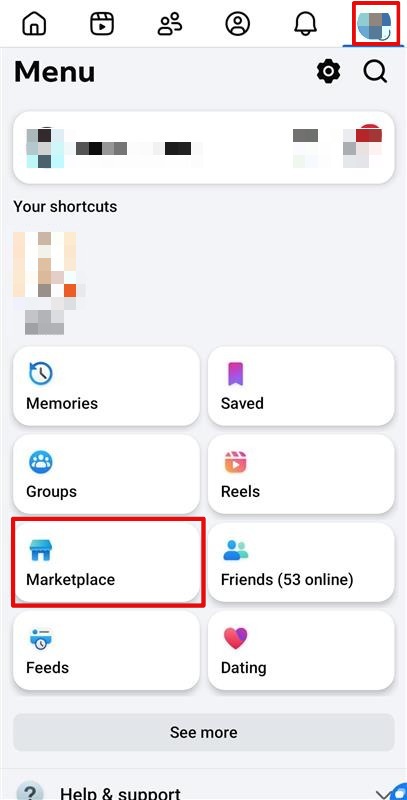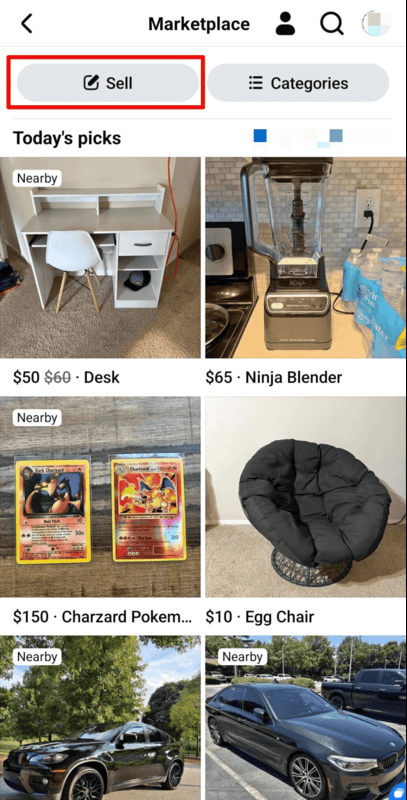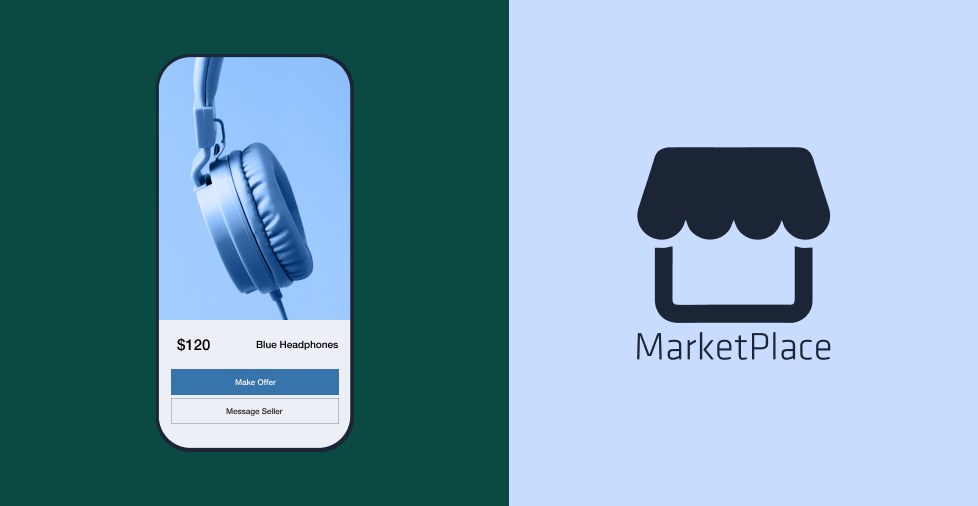Key takeaways
- Anyone can sell on Facebook Marketplace. All you need is a product, photos, and strong product copywriting skills.
- High-quality photos and detailed product descriptions are important if you want to capture potential buyers.
- Though Marketplace is a good entry point for entrepreneurs, it is not a permanent platform if you want to grow your business.
Many successful businesses begin with a simple goal: selling a product to someone who needs it. And the ideal place to start is Facebook Marketplace. The numbers speak for themselves: Capital One Shopping Research reports that 51.2% of all social media consumers made their most recent social media purchase on Facebook Marketplace.
Whether you’re decluttering your home or starting a new business, knowing how to sell on Facebook Marketplace can help you reach millions of potential buyers.
In this guide, you’ll learn the entire process, from creating your first listing to mastering payments and scaling your business. We will share expert tips, offer clear fee breakdowns, and show you how Network Solutions can help you grow your business beyond the platform.

How to sell on Facebook Marketplace for beginners
Before you can start selling on Facebook Marketplace, you’ll need an active Facebook account with a complete profile. If you’re creating a new account specifically for selling, keep in mind that Facebook prioritizes established users, so new accounts may need to wait days or even weeks before gaining access to posting listings. Once your account is approved for Marketplace, the actual selling process is simple and straightforward on both mobile and desktop.
The process is simple and straightforward on both mobile and desktop. Follow these steps, and you’ll have your first listing live in a matter of minutes.
Important: The steps illustrated here may vary per device, operating system, user settings and subsequent Facebook updates.
Step 1: Open Marketplace and create a listing
If you’re using the Facebook app, tap the Marketplace icon in the navigation bar. Then, tap the “Sell” button. From the options provided, select “Items” to begin.


If you’re navigating Facebook on a desktop, click Marketplace from your Feed. You can find it in the left-hand corner.
Then click “Create new listing” and you’ll see some options. For example, ‘Items for sale’, ‘Vehicle for sale’, and ‘Home for sale or rent’.
Step 2: Add photos, title, price, and details
This is the most important part of your listing. Clear, high-quality photos and a detailed, keyword-rich description are essential for getting noticed.
- Photos. Take multiple photos from different angles in good lighting. If the item has any flaws, include a close-up photo to be transparent with buyers.
- Title. Make your title descriptive and include the most important details a buyer might search for. For example, use “Vintage solid wood 6-drawer dresser” instead of just “Dresser.”
- Price. Price your item competitively. You can research similar listings to find the right range, but be prepared to negotiate.
- Details. Accurately describe the item’s condition (New, Used – Like New, Used – Good, Used – Fair).
Step 3: Choose category and location
Select the best-fit category for your item to make it easier for buyers to find. Facebook will also automatically use your phone’s location to set your pickup area, which you can adjust to a broader or more specific radius.
Step 4: Publish and cross-post to groups
Once you’ve filled out all the details, tap “Publish.” For extra visibility, share your listing in local Buy/Sell/Trade groups you are a member of.
How much does it cost to sell on Facebook Marketplace?
One of the biggest appeals of Facebook Marketplace is the low cost of entry. In fact, for many types of transactions, it’s completely free.
| Transaction type | Fee | Notes |
|---|---|---|
| Local pickup | $0 (Free) | Buyer pays in cash or via external app (e.g., Venmo, Zelle). No Facebook fee. |
| Shipped items | 10% of total sale price (min $0.80) | Fee deducted from your payout. Applies to item price + shipping cost. |
| Items $8 or under | $0.40 flat fee | Instead of 10%, a minimum fee applies. |
| Boosted listings | Varies (optional) | Paid ads to increase visibility. |
Local pickup
If you arrange a local meetup and are paid with cash or an external app (like Venmo or Cash App), Facebook does not charge any fees. You keep 100% of the sale.
Shipping and checkout
If you sell items with Facebook’s shipping and checkout services, you’ll pay a fee of 10% of the total sale price (minimum of $0.80). For items $8 or under, a flat fee of $0.40 applies (instead of 10%).
This fee covers payment processing and purchase protection. It’s automatically taken from your payout.
Let’s say you sell a vintage lamp for $50 and the buyer pays for shipping. Facebook’s fee is 10%, which is $5. Your net payout is $45 (not including shipping costs you pay).
Shipping and checkout features must meet certain criteria. To sell with shipping on Facebook Marketplace, your account must be established, you must be located in the continental U.S., and your item must be eligible (typically falling within the $5 to $500 price range). New accounts may not have immediate access since Facebook prioritizes established accounts.
- Boosting posts. Facebook Marketplace allows you to “boost” your listing for a fee, turning it into a paid ad. This is an optional ad spend that can significantly increase the reach of your item to a wider audience.
Note: Fees are current at the time of writing but can change without prior notice. Please refer to Meta’s channels for the most up-to-date rates.
What is the safest way to get paid on Facebook Marketplace?
Safety is a top concern for both buyers and sellers. While most transactions are smooth, it’s smart to be aware of the risks and take precautions.
Safe options
| Payment Option | Best for | Tips for sellers |
|---|---|---|
| Cash | Local pickup sales | Always check bills for authenticity. |
| PayPal | Shipped items and some local sales | Request payments as “Goods and Services” to ensure you get seller protection. |
| On-platform checkout | Shipped items | Facebook handles the payment securely, and you get access to purchase protection. |
Red flags and scams
- The overpayment scam. A buyer sends a fake check or payment for more than the asking price and asks you to refund the difference.
- “I’m out of town, my cousin will pick it up.” This is a common scam where a third party is used to facilitate fraud.
- Insisting on a specific, non-secure payment method. If a buyer is overly pushy about using an unfamiliar app or wire transfer, be cautious.
Safety scripts for sellers
When communicating, you can use a friendly but firm script to protect yourself. Try saying something like, “I only meet at police safe-exchange zones.” This sets a clear boundary and signals that you prioritize safety.
Tips to sell faster on Facebook Marketplace
Ready to go from passive seller to power seller? These tips will help you stand out from the crowd and close sales faster.
- Best days and times to post
- Write listing titles that sell
- Take enticing photos
- Respond fast for a sure deal
Best days and times to post
Timing can make or break your listing’s visibility. Most experts agree that mid-week, namely Tuesdays, Wednesdays, and Thursdays, between 9 AM and 2 PM generally get the most engagement. This is when people are on their lunch breaks or taking a quick social media pause from work.
However, weekends are also good for more specific products. Saturday mornings from 8 AM – 11 AM can be particularly effective for home goods, furniture, and family items, as people have more time to browse and plan purchases. Sunday evenings also see a spike in activity as people prepare for the week ahead.
Electronics and tech gadgets often perform well in the evenings between 6 PM – 9 PM when people are relaxing and scrolling through social media.
Pro tip: Use Facebook’s scheduling feature to post during optimal times even if you’re not available. This ensures your listing goes live when your potential buyers are most active.
Write listing titles that sell
Your title is your first impression and will determine if they stay to take a closer look. The key is balancing searchability with appeal. You can do this by using clear, descriptive language that includes the specific terms people are likely to search for.
Instead of vague titles like “Black Bookcase,” craft specific ones like “IKEA Billy Bookcase – Black-Brown, 79.5 inches H, Excellent Condition.” This approach includes the brand (IKEA), model (Billy), color variation (Black-Brown), dimensions, and condition.
Here are some proven title formulas that work:
- [Brand] [Model] [Key Feature] – [Condition] [Price-related hook]
- [Item Type] – [Size/Specs] [Standout Feature] [Urgency/Price appeal]
Don’t forget to include relevant keywords that buyers search for like “like new,” “barely used,” “moving sale,” or “must sell.” For popular items, mentioning the retail price can highlight your value: “iPad Pro 12.9″ – $1,200 Retail, Selling for $800.”
Keep titles under 60 characters, when possible, as longer titles get cut off in mobile views. You can save additional details for the description section.
Take enticing photos
Your photos are doing the heavy lifting in convincing buyers to choose your item over similar listings. Poor photos are the fastest way to lose potential sales, while great photos can help you sell items faster and often for higher prices.
- Start with lighting. Position items near a window or take photos outside during golden hour (the hour after sunrise or before sunset). Avoid harsh overhead lighting that creates unflattering shadows, and never use flash, which can wash out colors and create glare.
- Create a clean, uncluttered background. A plain white wall, clean floor, or simple backdrop makes your item the star. For smaller items, consider using a large piece of white poster board as a backdrop. Remove personal items, clutter, and anything that might distract from what you’re selling.
- Take multiple angles and shots:
- Wide shot. Shows the entire item and gives size context
- Close-ups. Highlight quality, texture, and important details
- Functional shots. Show the item in use or demonstrate key features
- Damage documentation. Always photograph any flaws, scratches, or wear honestly
- Display items by type. For clothing, either use a mannequin, lay items flat and styled, or model them yourself. Wrinkled, poorly displayed clothes rarely sell well. For electronics, include photos of the item powered on to prove functionality.
- Consider creating a simple photo setup you can reuse. Many successful sellers invest in a small lightbox or create a designated photo corner in their home with consistent lighting and backgrounds.
Respond fast for a sure deal
Quick response times can be the difference between closing a sale and losing a buyer to a more responsive seller. Most buyers expect a response within a few hours, and many will move on if they don’t hear back within 24 hours.
To make sure that you don’t lose potential buyers, set up Facebook notifications on your phone specifically for Marketplace messages. If you can’t provide a full response right away, send a quick acknowledgment like “Hi! I saw your message about the [item]. I’m at work but will get back to you with details by [specific time].”
Don’t just be fast—be helpful, professional, and friendly. Anticipate common follow-up questions and address them proactively. If someone asks, “Is this still available?” respond with availability, condition details, and how they can proceed to buy or view the item. Say something like, “Yes, it’s still available! Are you interested in seeing it in person? I’m free this evening after 6 PM or tomorrow morning.”
Consider creating template responses for common inquiries to speed up your response time while maintaining a personal touch. Just remember to customize each message with specific details about the inquiry.
From a Facebook Marketplace listing to an eCommerce website
Facebook Marketplace is an excellent starting point, but it has limitations. Once you find success, the next logical step is to build a professional home for your brand that you fully own and control.
The transition from casual seller to legitimate business owner is important to sustain your business longer. While Marketplace provides easy access to local customers, it also keeps you dependent on Facebook’s algorithm, policies, and user base. Smart entrepreneurs use Marketplace as a launching pad, but not as a permanent eCommerce store.
Turning Marketplace sales into repeat customers
Your satisfied customers are goldmines for future business if you know how to capture their interest and build connections beyond the first sale.
To do this, you need to legitimize your business. First, create a Facebook business page and direct customers there after each purchase. You can write a compelling CTA such as, “Thanks for buying! I post new items weekly on my business page [Name]—follow us to see what’s coming next!”
Follow up 24-48 hours after delivery with a simple check-in message. This builds goodwill and often generates referrals. You can offer your page followers exclusive perks like early access to new items or special discounts before posting to the general Marketplace.
Why you need a website
You might not think a website is beneficial now, but it will be once you’ve established a solid customer base. A website provides:
- Trust and branding
- Control
- Scalability
Trust and branding
A dedicated website signals you’re a legitimate business, not just a casual seller. You can showcase your brand story, display professional product photos, and present clear policies. A website with your brand identity builds customer confidence and often allows you to command higher prices.
Control
Facebook dependency is risky. You’ll find policies changing, algorithms shifting, and access isn’t guaranteed. But with a website, you have the ownership of customer data, email addresses, and relationships. You also control your brand presentation without competing ads or platform limitations.
Scalability
eCommerce websites offer unlimited product listings, automated marketing tools, and detailed analytics. You can implement search engine optimization (SEO) for online visibility, email marketing for repeat customers, and expand beyond local sales to national markets. These features transform a side hustle into a full-blown business.
How Network Solutions can help
Network Solutions provides the all-in-one suite of tools you need to build and grow your online business. From a mere Facebook Marketplace listing, you can grow a sustainable Facebook business page and into a successful eCommerce store. All you need is to start with a reliable partner.
You’ll find everything you need to start an eCommerce store at Network Solutions. We have a robust eCommerce Website Builder that can help you create an eCommerce site in minutes. Our eCommerce solutions let you manage inventory and process payments without relying on a third-party marketplace. You can also secure a professional domain name and email to build a brand identity people trust.

Start selling on Facebook Marketplace
You can easily start your entrepreneurial journey with Facebook Marketplace. Remember to start with a smart listing, be strategic about payments and pricing, sell effectively, and, most importantly, have a plan to grow your business beyond the platform.
When you’re ready to take the next step and build a professional brand that you own, Network Solutions is here to help.
Build your online store with Network Solutions AI Website Builder today and secure your brand with a custom domain and email package.
Frequently asked questions
Yes, for casual, one-off sales, you do not need a business license. However, if you plan to sell regularly or turn it into a full-time business, you may need to register as a business in your state or country and get a license. It’s always a good idea to check with your local government’s regulations.
Beyond cross-posting to groups, you can use Facebook’s built-in “Boost Listing” feature to run a paid ad campaign. This can significantly increase the reach of your item to a wider audience, but it comes at a cost, so be sure your potential return on investment is worth it.
As of our last update, there are no fees for local pickup sales where payment is arranged off-platform. For shipped items, Facebook charges a 10% selling fee (with a minimum of $0.40), which is taken from your final payout.
Facebook has a strict list of prohibited items based on its Commerce Policies. This includes weapons, ammunition, illegal drugs, tobacco and alcohol, live animals, and most digital goods and services. It’s always best to review the official policies before listing.
No. Facebook Marketplace is designed for the sale of physical goods and properties. Advertising services like home repairs, cleaning, or personal training is against the rules. If you want to sell services online, a professional website is the ideal platform.
Each has its strengths. Facebook Marketplace is excellent for quick, low-cost customer acquisition and testing a market. However, a professional website offers you full control, a more professional brand image, the ability to build customer loyalty, and long-term scalability.
For a serious business, the best strategy is to use both, driving early sales on Marketplace and directing customers to your professional website as your brand grows.




